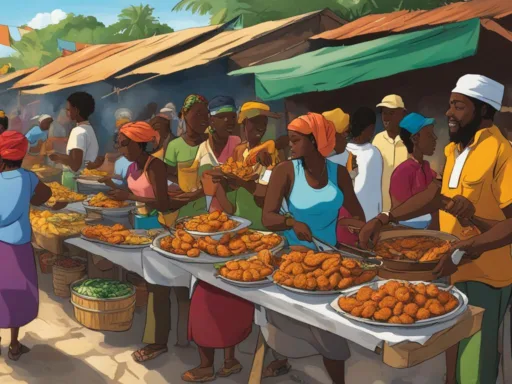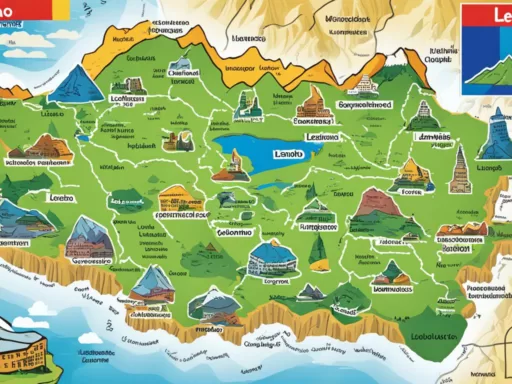When one thinks of Brazil, vibrant culture, and breathtaking landscapes often come to mind, but equally captivating is its linguistic diversity. The languages spoken in Brazil paint a colorful panorama of history and culture, with Brazilian dialects and accents adding a unique texture to the nation’s communication landscape. At the heart of Brazil’s dialogue is its Brazil national language, Portuguese, spoken by an overwhelming majority of the population. This language acts as the spine of Brazilian society, intricately woven into every aspect of life, from bustling city squares to tranquil rural villages. With a narrative that begins over 500 years ago, the evolution of Portuguese in Brazil is a fascinating story, teeming with nuances that differentiate it from its European sibling.
Key Takeaways
- Brazil’s rich linguistic heritage is anchored by Portuguese, the most widely spoken language across the nation.
- While influential globally, English plays a minimal role in Brazil, emphasizing the dominance of Portuguese.
- Historical influence has yielded a Brazilian Portuguese dialect that is distinct from its European origin.
- Cultural diversity is mirrored in the variety of languages, including a multitude of Brazilian dialects.
- The breadth of languages spoken in Brazil reflects not only its colonial past but also its modern societal fabric.
The Predominance of Portuguese in Brazil
Since the days of navigators and explorers, the linguistic landscape of Brazil has been predominantly shaped by Portuguese. This rich tapestry of language, woven throughout the centuries, forms a core part of Brazilian identity, representing not just a means of communication but also the nation’s heritage and culture.

Portuguese Brazil is a variant studded with the historical and cultural jewels of the land, wherein its European roots have been nuanced by indigenous and global influences. Today, it stands as the official language of Brazil, serving as the linchpin for the country’s 211 million inhabitants.
History of Portuguese in Brazil
When Portuguese colonialists set foot on Brazilian shores in 1500, they brought with them their language which would eventually plant itself deeply across the continent. Over the years, Portuguese Brazil took root, thickening its fibers as the quintessential medium in schools, offices, and homes. The penetration of Portuguese solidified its stature as the most powerful and expansive language spoken across the Brazilian nation.
The Influence on Culture and Daily Life
In every melody that floats through the celebrations of Carnaval, in every passionate debate over futebol, and in every transaction at the local markets, Portuguese is present. As an inseparable component of daily life, its resonance is heard on the cinematic screens of São Paulo and in the samba rhythms of Rio de Janeiro, influencing and echoing the very soul of Brazilian culture.
Portuguese versus Brazilian Portuguese
While it shares its roots with the language of Portugal, Portuguese versus Brazilian Portuguese present differences that parallel those observed between British and American variants of English. These intricacies stem from shifts in pronunciation, vocabulary, and grammar, which evolved as the people of Brazil carved out their version of the tongue. Despite these differences, the Orthographic Agreement of 1990 sought to synchronize Brazilian and European Portuguese spelling rules, underscoring the unity within the diaspora of Portuguese speakers.
As Brazil remains a cornerstone in the community of Portuguese language users, it beautifully showcases its linguistic prowess, standing as the country with the most Portuguese speakers worldwide—a testament to the enduring influence of its official language. However, with other Portuguese-speaking populations growing, notably in Africa, the linguistic demographics may shift, presenting a dynamic future for the language’s global spread.
Surprising Linguistic Diversity: Foreign Languages in Brazil
Delving into the realm of foreign languages Brazil is like embarking on an unexpected linguistic odyssey. Beyond the prevalent Portuguese, a kaleidoscope of Brazilian dialects and various European languages unfurl throughout the country, each narrating its own historical saga.
In the quilt of Brazil’s spoken languages, the threads of German heritage weave a prominent pattern. Southern regions, in particular, cherish vibrant communities where German is not only spoken but flourishes in the home. Moreover, this has cultivated distinct variances, led by Brazilian Hunsrik, which diverge expressively from their Germanic roots.

Just as the Brazilian Hunsrik dialects stand out among German speakers, the Italian language found its own Brazilian twist with the Talian dialect. As the echoes of 19th-century Italian migration resonate, certain municipalities confer upon Talian a status that is not merely ceremonial, but a signifier of cultural identity and belonging.
Painting an even broader stroke across Brazil’s linguistic canvas, a spectrum of minority languages contribute additional hues to its rich cultural diversity. Spanish, intertwined with the colonial history of Latin America, and French, tracing lines to a European past, mark their presence. Further eastward, the intricate characters of Japanese script are manifested verbally among sizable communities, particularly within the pulsating heart of São Paulo. The lexicon of Brazil’s minority languages even stretches to include the lesser-known, yet equally significant Vlax Romani.
Let us illustrate the prominence of these linguistic threads through a comparative analysis:
| Language | Origin | Region of Influence | Percentage of Speakers |
|---|---|---|---|
| Brazilian Hunsrik | German | Rio Grande do Sul | 1.9% |
| Talian | Italian | Rio Grande do Sul | Co-official status in municipalities |
| Spanish | Spanish | Border regions, Rio de Janeiro, São Paulo | 0.2% |
| Japanese | Japanese | São Paulo | 1.5 million people of descent |
| Vlax Romani | Indo-Aryan | Varied | 354,000 speakers |
Therefore, the mosaic of languages spoken in Brazil extends far beyond its Portuguese monolith, into a realm vibrant with the legacy of migration and influence. Embracing Brazilian dialects, these languages embellish the cultural dialogue and enrich the narrative of this effervescent nation.
Languages Spoken Brazil: Beyond the Official Tongue
While the official language of Brazil, Portuguese, unites the nation, there exists a rich tapestry of other languages woven into the country’s cultural fabric. This linguistic diversity stems from a history of immigration and settlement, giving rise to pockets of language communities that maintain their ancestral tongues. From the Germanic influence seen in the South to the Italian enclaves in São Paulo, these languages offer a glimpse into the complex human geography of Brazil.

The Germanic Threads: Hunsrik and Pomeranian
In regions like Rio Grande do Sul and Santa Catarina, the Germanic influence in Brazil is unmistakable. Hunsrik, derived from the Hunsrückisch dialect of Germany, is not just a relic of linguistic history; it is a vibrant part of the local culture, enjoying co-official status in certain municipalities. These enclaves of Germanic culture underscore the surprising diversity within the spectrum of languages spoken Brazil.
Italian Influence and the Talian Dialect
The Italian language Brazil landscape includes the unique Talian dialect. With origins in the Veneto region of Italy, Talian has been nurtured in communities throughout southern Brazil, particularly in Rio Grande do Sul. Here, in a testament to the depth of Italian heritage, Talian enjoys co-official status, bridging the old world with the new in Italy’s linguistic legacy overseas.
Japanese, Spanish, and Other European Languages
Another unexpected element in Brazil’s language repertoire is the prevalence of the Japanese language, most notably in the bustling city of São Paulo. The largest Japanese community outside of Japan has fostered a microcosm where Japanese customs and language bloom amidst the tropical landscape of Japanese in Brazil. Spanish, though not as widely spoken due to the dominance of Portuguese, is nonetheless significant, especially in urban centers and educational systems that linguistically bridge Brazil with its Spanish-speaking neighbors. Other European tongues, such as French, also resonate through the cosmopolitan areas of Rio de Janeiro and São Paulo, thanks to the presence of active expatriate communities.
| Language | Community Presence | Notable Regions |
|---|---|---|
| Hunsrik | Recognized and protected as part of cultural heritage | Rio Grande do Sul, Santa Catarina |
| Talian | Co-official status in various municipalities | Rio Grande do Sul |
| Japanese | Large, culturally influential community | São Paulo |
| Spanish | Mandatory learning in certain educational systems | Rio de Janeiro, São Paulo |
| French | Active expatriate community presence | Rio de Janeiro, São Paulo |
Indigenous Languages of Brazil: A Legacy Endangered
In the verdant expanse of Brazil’s cultural landscape, the spectrum of indigenous languages Brazil is fading, with echoes of ancestral voices growing dimmer by the generation. Despite the prominence of official languages Brazil, the preservation of these native dialects is not merely a linguistic concern but a battle for cultural survival.

Historical accounts suggest that before European influence, the region now known as Brazil was a melting pot of linguistic diversity, with over a thousand Brazilian dialects coloring the daily life of the indigenous peoples. According to the International Work Group for Indigenous Affairs (IWGIA), a dramatic decline has seen this number plummet to approximately 274 vibrant yet vulnerable indigenous tongues.
The Tikúna language, with its robust community of speakers, still breathes life into the somber narrative of language endangerment, holding a beacon for other native tongues striving against the odds. These languages form the backbone of Brazil’s rich cultural identity, yet many are teetering on the brink of oblivion.
To illustrate the critical state of language endangerment, consider these troubling figures: More than 100 of these precious linguistic threads are classified as endangered, with each successive generation less likely to pass on the torch of their linguistic heritage. Below is an overview of some of the most spoken indigenous languages and their respective speaker populations, highlighting the urgency for conservation efforts:
| Language | Speaker Population | Endangered Status |
|---|---|---|
| Tikúna | Approx. 50,000 | No |
| Kaingang | Approx. 18,000 | Yes |
| Guarani Mbyá | Approx. 10,000 | Yes |
| Terena | Approx. 10,000 | Moderately |
| Macushi | Approx. 6,000 | Yes |
While these languages represent only a fraction of the rich linguistic tapestry, their survival impacts the cultural integrity of their communities and of Brazil itself. The official languages Brazil policy structures may recognize Portuguese as the unifying national tongue, but it often comes at the expense of indigenous language vitality.
The permeation of Portuguese into the fabric of indigenous communities signifies both progress and loss: As Portuguese establishes itself as a dominant language, fewer indigenous people maintain fluency in their native languages. The result is a critical need to balance the official use of Portuguese with initiatives that nurture and revitalize Brazilian dialects intrinsic to the nation’s cultural diversity.
As explorers of Brazil’s linguistic terrain, we can appreciate the importance of these indigenous tongues, not just as a means of communication but as vessels of knowledge and tradition. They embody the essence of Brazil’s multifarious identity and must be safeguarded for the voices of tomorrow.
The Impact of Language Policies on Brazil’s Linguistic Landscape
The patchwork of languages within Brazil’s borders is as diverse and complex as its ecosystem. At the apex of this linguistic biodiversity stands the Brazil national language, Portuguese, an enriched descendant of colonial legacy, cast across the nation’s societal canvas. However, beneath this seemingly uniform linguistic veneer lies a heterogeneous collection of languages that contribute to Brazil’s cultural vibrancy. Language policies in Brazil have played an integral role in shaping the country’s lingual contours, balancing the dominion of Portuguese with the sustenance of its rich linguistic plurality.

National Language Versus Regional Recognition
While Portuguese reigns as the linguistic titan across Brazil, various regional tongues emerge with steadfast prominence. The use of Portuguese as the de facto language across all strata of governance and academia has not diminished the tenacity of regional dialects and minority languages, which relish official recognition at more localized tiers. This nuanced acknowledgment validates the importance of linguistic diversity in the Brazilian panorama, underscoring the value of every official languages Brazil speaks within its cultural framework.
Official Status of Minority Languages
Steadfast in its multicultural essence, Brazil has afforded official status to several languages that speak of its historical intricacy. Languages like Nheengatu, alive in São Gabriel da Cachoeira, and Germanic dialects heralded in southern municipalities, echo a past steeped in indigenous heritage and European migration. Such policy-driven recognitions celebrate the intricate linguistic mosaic, ensuring that the nation’s dialogue includes voices that, although minority in numbers, resound through the annals of Brazil’s history and the heart of its identity.
Efforts on Language Preservation and Revitalization
Confronting the shadows of linguistic erosion, Brazil employs robust measures to preserve and rekindle the vibrancy of its endangered vernacular treasures. Through initiatives like the National Inventory of Linguistic Diversity and the enactment of laws recognizing Brazilian Sign Language (Libras), the country channels a proactive commitment to language preservation Brazil. These measures embody a conscious attempt to embrace the linguistic variegation that is essential to the nation’s cultural fidelity, ensuring the voices of all Brazilians are heard and treasured for generations to come.
In conclusion, the linguistic policies of Brazil serve as the scaffolding upon which the country’s language landscape is erected. They carve out a space where the omnipresent Portuguese coexists with the whispers of minority tongues, where efforts to preserve indigenous lines of communication are as important as the use of the national language. This dedication to language preservation and recognition reflects Brazil’s unwavering reverence for its cultural past, present, and future – a testament to the enduring power of language in shaping national identity.
Conclusion: Embracing Brazil’s Linguistic Richness
In the kaleidoscopic setting of Brazil, where the vibrancy of culture and the rhythms of life burst forth in a myriad of patterns, language remains a constant thread uniting its people. The Brazil national language, Portuguese, serves not only as the primary mode of communication but also as the heart of the nation’s identity. This linguistic stronghold coexists harmoniously with an array of minority languages, each adding a distinctive note to the symphony of languages spoken Brazil. From the historic whispers of indigenous tongues to the cultural echoes of immigrant dialects, Brazil’s language portfolio is as intricate and diverse as the nation itself.
Amidst the cacophony of global tongues, the official languages Brazil recognizes underscore the nation’s commitment to celebrating its linguistic diversity. The nurturing of these myriad voices through protective policies and revitalization initiatives speaks to Brazil’s dedication to honor its past while weaving a rich tapestry for its future. As a nation, it recognizes that the multilingual dialogue within its borders is not just about preserving history; it is about enriching the present and inspiring the future narrative of the Brazilian people.
Indeed, every Portuguese utterance, every note of Talian or Hunsrik, and the cadences of myriad indigenous words, compose Brazil’s cultural narrative. As we turn the pages of this nation’s rich heritage, the importance of recognizing and valuing its varied languages spoken Brazil cannot be overstated. For in understanding and cherishing these linguistic threads, we gain a deeper appreciation for the vibrant, resilient spirit of Brazil and ensure that its story continues to be told with the same richness and depth it has always commanded.
FAQ
What is the official language of Brazil?
The official language of Brazil is Portuguese, spoken by approximately 98% of the population. It is used in all governmental, administrative, and educational settings, as well as being the dominant language of cultural expression and daily communication in the country.
Are there any differences between Portuguese spoken in Brazil and Portugal?
Yes, there are differences between Brazilian Portuguese and European Portuguese in terms of pronunciation, vocabulary, and some grammatical structures. The Orthographic Agreement of 1990 aimed to standardize the spelling between the two, similar to the relationship between American and British English, but distinctions in usage and pronunciation remain.
What other languages are commonly spoken in Brazil besides Portuguese?
Brazil is home to a variety of foreign languages due to its history of European migration. German, particularly the Hunsrik dialect, and Italian, mainly the Talian dialect, are prevalent. Additionally, Spanish, Japanese, and even minority languages like Pomeranian have communities of speakers in Brazil. Indigenous languages also contribute to the linguistic diversity of the country, although their numbers are dwindling.
How prevalent are indigenous languages in Brazil?
There are roughly 274 indigenous languages still spoken in Brazil today, although this number is significantly lower than the pre-colonial period. Tikúna is one of the most widely spoken indigenous languages. However, many of these languages are endangered, with only a small portion of the indigenous population using them as their first language.
Do any other languages have official status in Brazil?
While Portuguese is the national language of Brazil, certain regions recognize minority languages at a local level. For example, the Germanic language Hunsrik has official status in some municipalities of Rio Grande do Sul and Santa Catarina, and Nheengatu is official in São Gabriel da Cachoeira. Additionally, Brazilian Sign Language (Libras) is officially recognized across the country.
Are foreign languages taught in Brazilian schools?
Yes, learning a foreign language, particularly English and Spanish, is part of the Brazilian educational curriculum. Spanish is mandatory in many schools, especially in large urban centers like Rio de Janeiro and São Paulo. Other languages may also be offered, often influenced by local immigrant communities and cultural ties.
What efforts are being made to preserve endangered languages in Brazil?
Brazil has undertaken initiatives such as the National Inventory of Linguistic Diversity to document and preserve minority languages. Laws and language policies, including the recognition of Brazilian Sign Language and local language conservation programs, demonstrate a commitment to celebrating and safeguarding Brazil’s diverse linguistic heritage.






